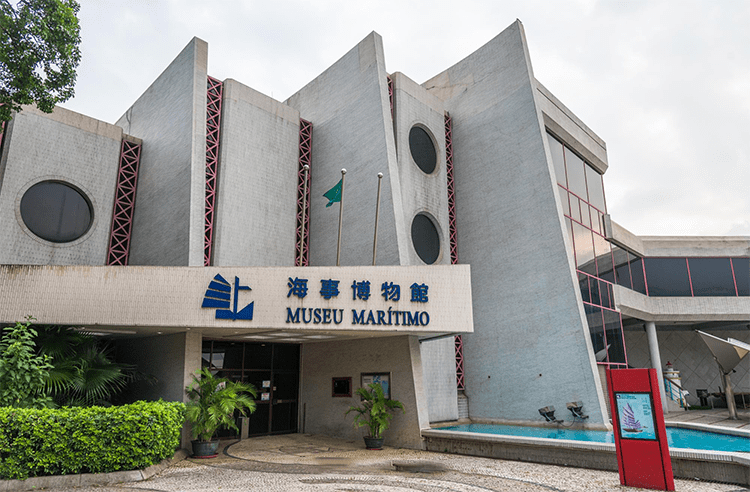Discover Macau’s Maritime History: 500 Years of Sea Stories at the Maritime Museum
1. Title:
Macau Maritime Museum: 500 Years of Sea Stories
2. Introduction:
Beside the incense-scented A-Ma Temple stands a white, ship-shaped building that seems to have sailed straight out of history. This is the Macau Maritime Museum — a time capsule where surf, sail silhouettes, and navigational charts tell the story of East-West encounters. Step inside to travel from an old fishing village to a key port on the Maritime Silk Road, handle a Portuguese navigator’s compass, see Chinese fishing nets, and even “steer” a 16th-century merchant ship.

3. Core identity and highlights:
“One museum, half of Macau’s maritime epic”
As one of China’s few specialized maritime museums, the Macau Maritime Museum uses the sea as its thread to link 500 years of cultural exchange. Unlike conventional history museums, it brings seafaring stories to life with realistic ship models, interactive technology, and dockside scenes.
4. Architecture and history:
– Ship-shaped design with cultural cues: Opened in 1987, the museum’s exterior resembles a white sailing ship. Portuguese-style arched windows blend with Chinese sloped roofs, paying tribute to Macau’s seafaring legacy around the A-Ma (Mazu) harbor.
– Meaningful location: Located next to A-Ma Temple (Macau’s oldest temple), the site symbolically ties fishermen’s faith to their maritime livelihoods.

5. Must-see treasures:
1. 16th-century Portuguese caravel model:
A 1:10 scale recreation of the classic Age of Discovery vessel, exquisitely detailed, showing how Portuguese sailors reached Macau across half the globe.
2. Full-size Chinese junk replica:
A 12-meter-long reproduction you can board — experience the engineering behind Zheng He’s famous voyages.
3. Qing-era Macau coastal defense map:
Hand-drawn charts marking forts and sea lanes, revealing Macau’s former role as a strategic military outpost.
6. Immersive experiences:
– “Take the helm” navigator simulator: In the basement, a bridge simulator lets you “sail” past Cape of Good Hope through stormy seas — the wheel even vibrates for realism.
– Rooftop viewpoint: Overlooking the Inner Harbor, the rooftop contrasts ancient ships and modern container vessels, delivering a powerful sense of time and place.

7. Practical visitor tips:
– Suggested routes:
– Quick tour (1 hour): Chinese junk → Portuguese caravel → viewpoint → bridge simulator.
– In-depth tour (3 hours): Follow thematic sections — “Fishing, Trade, Defense, Technology” — for a full experience.
– Hidden gem: On the second floor, the “Fishermen’s Beliefs” exhibit contrasts the Mazu shrine with Western sea-deity artifacts.
– Language support: All exhibit labels are in Chinese, Portuguese, and English. The service desk rents English audio guides (deposit MOP 50).
– Tickets & hours:
– Adult MOP 15 (≈USD 2), student MOP 8. Closed Tuesdays. Weekend family shipbuilding workshops are common.
– Avoid crowds by arriving at opening (10:00) or after 16:00 when tour groups thin out.
8. Local tips:
– After your visit, make a wish at the neighboring A-Ma Temple and try the Polish- and Portuguese-influenced canned fish snacks sold by market vendors (a two-minute walk from the museum).
– The museum is free on the first Sunday of every month, but advance booking on the official website is required.

9. Getting there:
– Bus: Take routes 1, 2, or 5 to the “A-Ma Temple” stop — the museum is right there.
– Taxi: Tell the driver “Maritime Museum” (Portuguese: Museu Marítimo). Most Macau drivers understand English.
10. Conclusion:
In Macau, the sea is more than scenery — it’s woven into the city’s DNA. Standing on the museum rooftop as the sun gilds the century-old pier, you’ll understand how openness and cultural fusion were set in motion during the Age of Discovery. Bring this guide, drop anchor for a few hours, and let the waves and sails tell their story — it’s worth your time.


